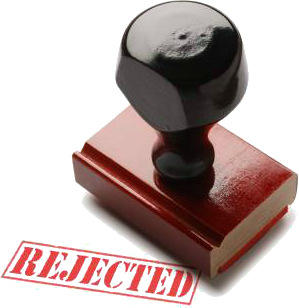
If you want to protect your company’s brand and identity, trademark registration is essential. Many companies put off filing an application, because they think the process is too complex, or even unnecessary. It might be an involved process, but it can be broken down into four easy steps. Follow along and learn how to file a trademark application with the United States Patent u0026amp; Trademark Office (USPTO) with minimal frustration.
Step #1
Perform A Comprehensive Search

Do you like wasting money? If so, then you can skip Step #1. For everyone else, performing a comprehensive trademark search is the most important step in the process. How can you expect the USPTO to approve your trademark application if you haven’t checked to make sure that it isn’t too similar to another registered trademark?
There is a standard to which new trademarks are held:
Likelihood of Confusion
If the mark on an application might cause consumers to confuse the applied-for mark with an existing trademark, the USPTO will reject the application. So not only do you have to look for exact matches of your mark, but you also have to look out for marks that could be considered “confusingly similar”.
That’s why a trademark attorney can provide invaluable assistance. While anyone can search Google and the Trademark Electronic Search System (TESS) for free, an attorney provides two distinct advantages:
1. An attorney has the experience to properly use the TESS database. Remember, your search isn’t complete if there are no exact matches. An attorney can seek marks that could be considered “confusingly similar”.
2. An attorney has access to databases containing common law trademarks and state trademark registrations. Not all valid trademarks are registered with the USPTO. Searching common law trademark databases and state trademark databases further ensures the validity of your trademark application.

Here’s a prominent example. In 2010, Snooki, of Jersey Shore fame, attempted to trademark her name. However, her application was preliminarily refused because the rights to a similar name, “Adventures of Snooky,” had already been registered for a series of children’s books. Although the names were spelled differently, the USPTO refused Snooki’s application, because the similarity of the names was enough to potentially confuse consumers in the marketplace. An experienced trademark attorney could have caught the alternate spelling, Snooky in addition to Snooki, and saved the Jersey Shore star a few hundred dollars.
Step #2
File a Trademark Application

If you did your due diligence with Step #1, you’re ready to file your trademark application. In one way, it’s as easy as filling out an online form. In another way, there are some complexities. You of course have to fill out the application with care and attention to detail. But you’ll have an important choice to make before you type one letter on the application.
TEAS or TEAS Plus?
When you go to the trademark application webpage, you’ll see this choice. The simple method is to file the TEAS form. It costs $50 more, but it requires far less of the applicant. If you prefer to save $50, TEAS Plus is a great option.
What’s required of you on a TEAS Plus application:
- You must fill out every field — they’re all mandatory
- You must select a class of goods or services from the Acceptable Identification of Goods and Services Manual. On a basic TEAS form you have an opportunity for free-text entries, but on the TEAS Plus form you have to stick with the classes and descriptions that the USPTO provides.
- You agree to file all future communications through the TEAS system
- You agree to receive all future communications from the USPTO via e-mail
- You pay all fees at the time of application
IMPORTANT NOTE: The USPTO will charge you the extra $50 per class of goods and services if at any point you violate these terms.
It’s worth noting that the contents of the trademark application form can have important legal implications that you may not understand on your own. For this reason, it’s best to have an attorney on hand to guide you through the process.
Step #3
Monitor Your Application

The third step is the easiest of them all, but it’s also the most frustrating. You’ll probably spend a lot of time refreshing web pages, hoping that there’s some update on your trademark application. Chances are that after you file your application you’ll have some waiting to do. The general timeline before you hear anything:
4 to 6 Months
The good news: You will eventually hear back from the USPTO. The better news: if the examining attorney finds no fault with your application, you’ll move on to Step #4 and be one step closer to a final trademark registration.
The bad news: You could face some rough times at this point. The USPTO might issue an Office Action. Or worse, you might get the dreaded:

Relax. Chances are the USPTO won’t outright refuse your application. Typically they’ll give you six months to amend your application and resubmit, correcting the issues the examining attorney raises.

One big reason the USPTO issues Office Actions: the mark is merely descriptive. Apple ran into this problem when they filed a trademark application for IPAD MINI. They filed the application in November 2012, not long after the product launched. But the USPTO issued an Office Action, stating that the mark was merely descriptive. Apple already owned trademark rights to “IPAD” and MINI acts merely as a description of the existing mark. Later the USPTO changed its initial refusal and allowed Apple to continue with its registration, provided that it disclaims any rights to the use of the word MINI apart from the mark as shown.
Step #4
Finalize Your Registration

Approval of your trademark application is a big milestone, but it is not the end of the process. Although the USPTO has many resources at its disposal, it cannot examine likelihood of confusion in the same way as trademark owners can. To ensure that your mark does not potentially cause confusion among consumers, the USPTO will publish your mark in the Trademark Official Gazette, a weekly publication. This is where your mark is put to the test.
Any companies that believe your registration may infringe on their own trademark rights has 30 days to state its opposition. If a company does file an opposition, your case will move to the Trademark Trial and Appeal Board (TTAB).
If a company does oppose your trademark registration, it is not the end of the world. In many cases, companies will file oppositions to any mark that bears even the slightest resemblance to one of their marks. They want to fully protect their trademark rights and avoid dilution of their mark. There is a chance that your mark will pass through eventually (though possibly after you spend money on legal defense).

A prominent example involves video game developer King.com Ltd., makers of the massively popular game Candy Crush Saga. When Stoic Studio filed a trademark application for their game, The Banner Saga, King.com filed an opposition. They had a pending application for CANDY CRUSH SAGA and didn’t want Stoic’s use of the word SAGA to dilute their own mark. The public at large might have seen this as ludicrous — the games are nothing alike and surely King.com can’t own the word “saga” — but King.com was merely trying to prevent dilution of its own mark. A year before that, the developer Alfred Ransom of Runsome Apps, filed an opposition to King.com’s trademark application for CANDY CRUSH SAGA. Since 2010, Ransom has owned trademark rights to the name of his game, “CANDYSWIPE”.
In early 2014 all cases were settled. King.com and Stoic Studios will continue with their respective trademark applications, while Ransom will continue to own trademark rights to “CANDYSWIPE”.
If no company opposes your mark, congratulations! The USPTO will send you a certificate of registration by mail. Typically this will take about three months. You will also receive instructions about how to preserve your trademark, so that you don’t lose rights over time.


